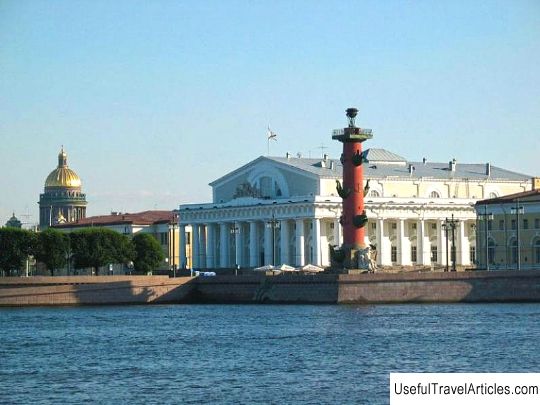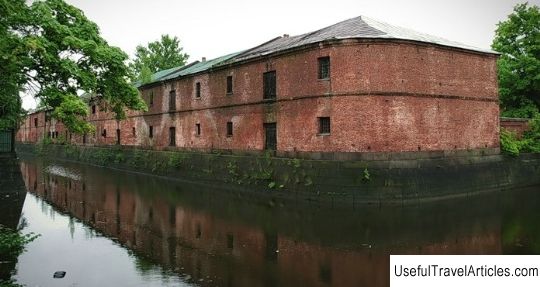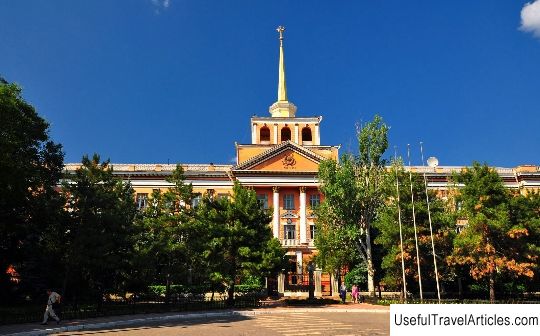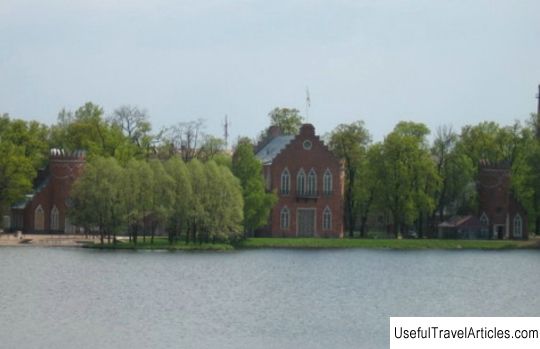Admiralty description and photo - Russia - Saint Petersburg: Saint Petersburg
Rating: 8,2/10 (2543 votes) 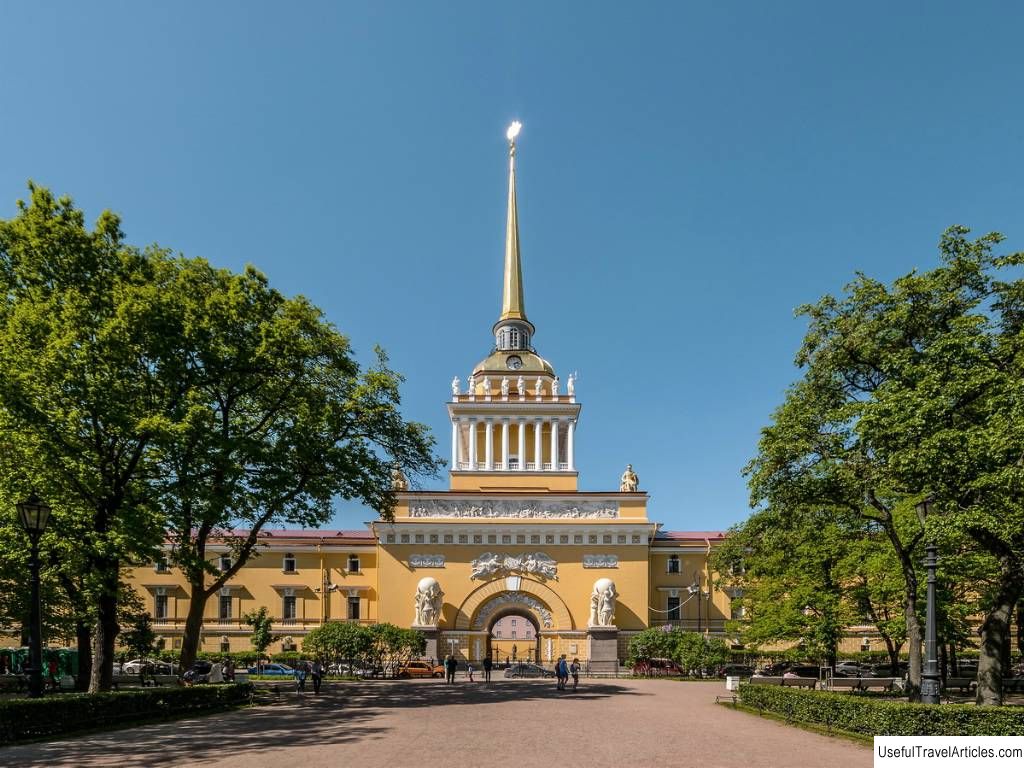
Admiralty description and photos - Russia - Saint Petersburg: Saint Petersburg. Detailed information about the attraction. Description, photos and a map showing the nearest significant objects. Photo and descriptionOne of the main architectural decorations of the cultural capital of Russia is the Admiralty. This complex of buildings in the Empire style was built in the 18th century. The first mention of it dates back to the beginning of the named century. It should be noted that initially its purpose and appearance were different than at present: the buildings were erected for the repair and construction of ships. The buildings were later rebuilt. Today, the famous complex of buildings houses the command of the Russian Navy. The silhouette of a ship, crowning one of the magnificent buildings of the complex, is now the symbol of the northern Russian capital. The beginning of historyIn the travel log of Peter the Great there is a record of the foundation stone of the "Admiralty House", the length of which was two hundred fathoms and the width - ten fathoms. The same entry mentions that after the building was laid, the event was cheerfully celebrated in a drinking establishment. Construction work progressed very quickly. Already two years after the recording was made, the Admiralty House project was brought to life. The "house", built according to the emperor's drawings, was a real fortress (it was necessary to protect the shipyard). It was surrounded by ditches with water, the building was also protected by an earthen rampart. The building itself was low (consisted of only one floor) and very long. The premises of this building were used as warehouses and forges, some rooms were given to the Admiralty department, more precisely, its services. A canal was dug in the courtyard of the building (it was filled up at the beginning of the 19th century). It was necessary for the delivery of building materials, and also had a defensive function. Several years after the building was completed, a special room was equipped in it for storing blueprints and ship models. Here you could see a model of each ship built at the shipyard, and familiarize yourself with its drawings. At the beginning of the 19th century, this room was turned into a museum. It existed here until the end of the 30s of the XX century. Silhouette of a boat The history of the famous boat, which is currently one of the symbols of the city, begins at the end of the 10s of the 18th century. It was then that the silhouette of a boat appeared over the gates of the Admiralty. It was hoisted there by Harman van Bolos , a Dutch carpenter. The silhouette of the ship was attached to a long metal spire. What kind of ship became the prototype for this decorative element? Historians have not yet been able to establish this. Some adhere to the following version: the model was the silhouette of the ship that first entered the newly completed St. Petersburg port. According to another version, the spire is crowned with a reduced silhouette of a completely different ship, built in the 60s of the 17th century; it was the first Russian ship intended for military purposes. Which of the two versions is correct? The answer to this question has not yet been found. There is a legend that the flags on the masts of the famous ship were made of gold . It is impossible to confirm or refute this legend at the present time, since the original silhouette of the ship, crowning the spire, was lost at the beginning of the 19th century and was replaced by a new one. This new boat was also replaced after about seventy years. The silhouette that currently adorns the spire is an exact copy of the second replaced boat. Building in the 18th century The stone building was erected in the 30s of the 18th century . His project was developed by Ivan Korobov . The architect was faced with the task of creating a truly monumental, majestic structure, and this goal was achieved. The most striking detail of the building is the tall tower at the top of the gate . Its spire was gilded. According to some historical documents, the gold to cover the spire was obtained by melting down ducats, which the Dutch government presented to the Russian emperor as a gift. However, this information raises doubts among historians. One way or another, the bright spire, sparkling in the sun, still makes a great impression on the guests of the capital. Its tip ends with a weather vane - the famous silhouette of a boat. This silhouette is at a height of seventy-two meters (the height of the tower is forty-nine meters, the height of the spire is twenty-three meters). In the 40s of the 18th century, the vast space near the building was used as pasture. Also, military exercises were held here. On holidays, fair festivities were held on this field, everything around became colorful from brightly painted merry-go-rounds and booths. Under Elizaveta Petrovna , serious problems arose with the serf canal: it began to accumulate dirty water (drains merged there). The Empress ordered the systematic cleaning of the channel. During the same time period, a large area around the building was paved. The Admiralty in the 19th and 20th centuries At the beginning of the 19th century, the need arose for restructuring the Admiralty. Now it was located in the central part of the city, not far from it were majestic palaces, and therefore it had to look less utilitarian, more bright and elegant. The building reconstruction project was developed by Andrey Zakharov . The changes he made to the appearance of the Admiralty were very significant, but they did not touch the most striking and recognizable detail of the building - an elegant tower above the gate and a gilded spire with a weather vane-boat. Experts find that the task facing the architect was brilliantly solved by him. The new main facade of the building in the 19th century looked very impressive (and still makes a great impression): its length is four hundred seven meters . Let's talk briefly about other architectural features of the magnificent structure and the entire architectural ensemble, which plays such an important role in shaping the appearance of the cultural capital of Russia. - The architectural ensemble includes two U-shaped buildings . They were once separated by a moat. In the 19th century, one of the buildings was occupied by workshops, and the other by the institutions of the country's river and sea fleet. - The central element of the ensemble is the tower crowned with a spire , which has already been described above ... At its base there is an arch, the middle part of the tower is decorated with a colonnade. - Pay attention to the fact that the overall composition of the architectural complex is distinguished by austerity, amazing integrity and clear rhythm. - Separately, it should be said a few words about sculptures , which are an important part of the architectural ensemble. Among them, the image of the goddess of justice, rewarding artisans and warriors, nearby - figures of nymphs holding globes, sculptures of four famous heroes of the ancient world ... It is impossible not to mention twenty-eight sculptural allegories. They symbolize the elements, seasons, cardinal points; one of the statues depicts the muse of astronomy; a part of the architectural ensemble is also the figure of the Egyptian goddess who patronizes seafarers; the complex of buildings is decorated with other allegorical sculptures. Please note that all of the above images are united by one theme: they affirm the image of our state as a maritime power. Many other sculptures that are not listed here, but are part of the famous architectural ensemble, are devoted to the same theme. - Not only the architectural appearance of the Admiralty has survived, but also a part of old interiors . This is the main staircase located in the lobby, as well as the library and meeting room. The interiors are distinguished by austerity, but it is softened by the grace of decoration. The windows are positioned so that all rooms are perfectly lit; this bright light also softens the aforementioned severity of interior decoration. In the years of siege, a bright gilded spire with a boat, which was a very visible target for the enemy, was covered with a cover. Shortly before the Victory, this cover was removed. The building, which adorns this spire, was restored several times during the XX century. Restoration work was carried out in the late 1920s, then in the second half of the 70s and at the end of the 90s. In the 70s, the spire was gilded; then into the cavity of the ball, located under the silhouette of the ship, a special container with the text of the Constitution of the Soviet Union was placed. Present time Several years ago, the townspeople noted a disturbing fact: a rather large crack appeared on the famous tower with a sparkling spire. At present, this alarming situation is being considered by the Committee for State Control, Use and Protection of Historical and Cultural Monuments. Five years after the discovery of the crack, a move to the premises of the architectural complex of the high command of the Navy took place, this event was marked by the Andreevsky flag over one of the towers. A year later, a temple was opened on the territory of the Admiralty . This church has one unusual feature: there is no cross above its dome, since it is replaced by the cross depicted on the St. Andrew's flag. There are plans to make some minor changes to the current appearance of the architectural complex. According to these plans, the space of the courtyards will be covered with a glass dome, and the historical buildings will be united by glass passages.          We also recommend reading Plac Teatralny description and photos - Poland: Warsaw Topic: Admiralty description and photo - Russia - Saint Petersburg: Saint Petersburg. |

